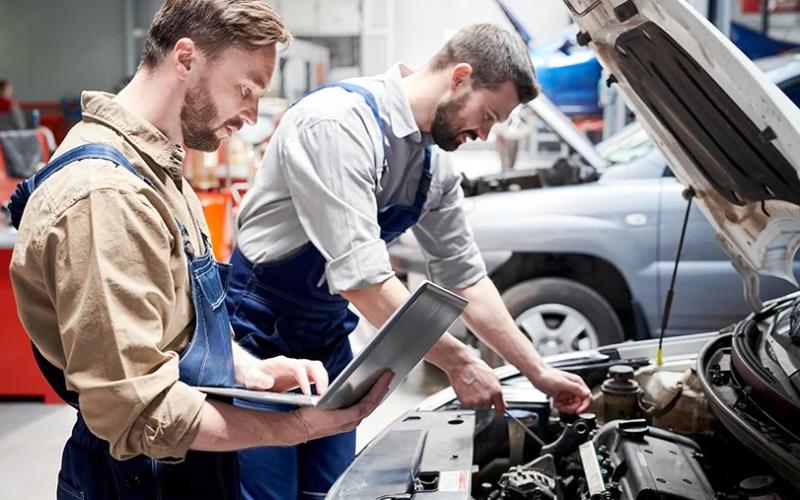What is MOT and Why is it Important for Vehicles?

In this article, you will learn about the MOT test conducted in the UK under the authorized organization DVSA (Driver and Vehicle Standards Agency) who have the rights by whom the the MOT test will be done. The MOT which stands for (Ministry of Transport Test) is conducted by different organizations which are Authorized Examiners (AEs) are the garages for commercial use and have the right to conduct the MOT test, the other Nominated Testers (NTs) which the DVSA also approves to test the different types of vehicles, Designated Councils are also one of the local authorities which are approved to organize the MOT test and the last one is DVSA staff who also check the vehicles in MOT test. The types of equipment by which the different organizations conduct the MOT test are also selected by the DVSA so that no wrong decision will be taken for any vehicle. MOT is done annually and is compulsory to pass by the vehicles to ensure that they are safe to use on the roads and do not harm the environment.
When Your Vehicle Should Take Part in MOT Test?
Have you purchased your vehicle in the last 6 months? If yes, then you are not required to pass the MOT test as this test is for those vehicles that have passed 3 years from the date of purchasing and registration. But if your vehicle crosses the 3 years, then your vehicle has to participate in the MOT test and after attending the first MOT test it needs to take part every year on the same date as it passed this test last year. After passing the MOT test Bristol you have the right to go anywhere with it as this test is done to know whether the vehicles are fit or not to meet the environment and road safety. So, you have to check your MOT certificate from time to time which shows you the exact date of your vehicle’s due date of MOT. You can also receive a message by authorization in the form of mail or text at a free cost, you only need to log in to the MOT reminder service which is issued to the owner of the vehicle at the time of the first MOT of the vehicle.
Which Vehicles are Required to Participate in the MOT test?
There are some rules for all the vehicles as these are categories in different classes like class 1, class 2, class 3, class 4, class5, etc. which are as follows-
-In class 1 and class 2 the motor bicycles are eligible to enter in this test, in class 3 only three tyre vehicles are allowed which are not more than 450 kg weight.
-On the other hand, in class 4 the cars, tri-wheel vehicles which weigh more than 450 kg, ambulances, taxis, and minibuses who restrict 12 seats and vehicles that load goods items not higher than 3,000 kg, not only motor caravans and dual-purpose vehicles are also coming under the class 4.
-Class 5 is for private vehicles, ambulances, motor caravans and dual-purpose vehicles that carry passengers of 13 or more.
-In class 6 or PSV test the public service vehicles that are hired to serve more than 8 passengers and the test that is conducted for this class is by DVSA/DVA staff on their stations or ATF (Authorized Testing Facilities or at the premises that are designated.
-Goods vehicles whose weight is over 3,000 kg and extend up to 3,500 kg should be categorised under class 7 and the exact weight that is needed to be considered in this class is on the ‘Ministry Plate’.
-HGV test in which the weight of the vehicle should be 3,500 kg and trailers not less than 1,020 kg along overrun brakes.
Which Parts of the Vehicle are Tested in the MOT Test?
It is a vital document that is needed for every vehicle, so if your vehicle fails in attempting the MOT Bristol or does not pass this test then he/she is not allowed to drive the car, bike, bus, etc. on the streets of the UK. If you want to pass this test without any obstacles then you must take care of every part of the vehicle that is described below-
- Mirrors should be in good condition as these are checked for security purposes.
- All lights including front and back lights, directions indicators, fog lights, number plate lamps, registration plate lights, etc.
- The fuel is also inspected to determine whether your vehicle properly consumes the fuel or not.
- Wheels and tyres are also checked by the TMPS machine to check the adequate tyre pressure.
- The seatbelts include front and back.
- Brakes are also a part of this test.
- Suspension, the structure of the body of your vehicle and the overall condition of the vehicle is also checked.
- Steering, tow bar, exhaust emissions, springs, wipers, windows, sensors, etc.
The MOT test does not include the engine’s condition, gearbox and clutch so before taking your vehicle for the MOT test you should always check the above-listed parts of your car so that you do not fail in this test.
Comments